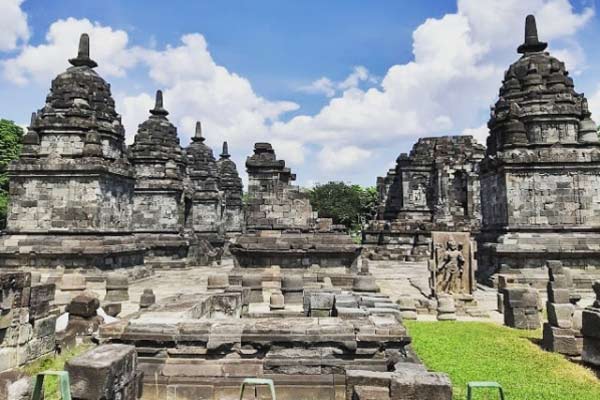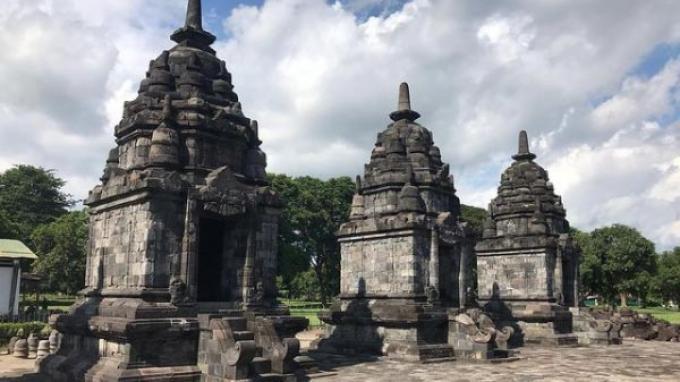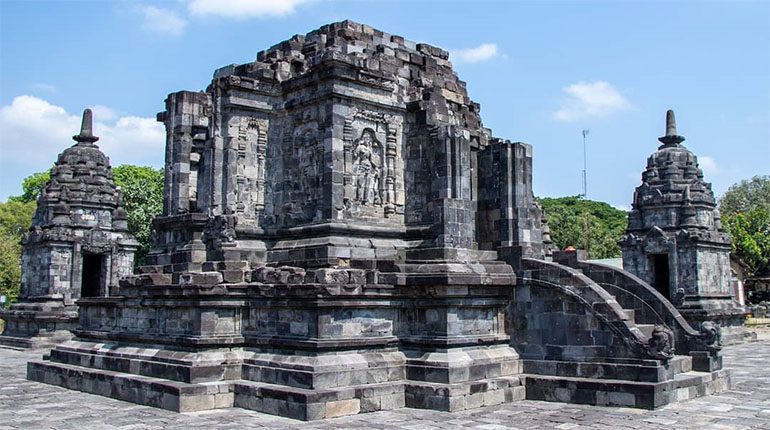Sojiwan Temple Tourism: Perhaps not many people have heard of it, especially when asked where it is located. Indeed, Sojiwan Temple is not as well-known as Prambanan Temple, let alone Borobudur Temple. It's actually not far from Prambanan Temple, taking perhaps half an hour on foot. Recently restored in 2011, this temple is relatively new compared to the other temples. What's most striking about this temple is its similar shape to Prambanan: tall with a pyramid-like structure on top, but the upper part of the temple consists of stupas similar to those at Borobudur. It could be said that this temple is like a "marriage" between Prambanan and Borobudur. This temple is situated within a fairly extensive complex with beautiful, well-maintained gardens. It turns out that this complex was only inaugurated after being restored in December 2011 by the Minister of Education and Culture, Mohammad Nuh. Initially, this temple was only a half-finished structure that looked like a ...
Lumbung Temple is a temple located in the Prambanan area, precisely in Dukuh Bener, Bugisan Village, Prambanan District, Klaten Regency, Central Java. This temple is one of the temples included in the Prambanan World Heritage Area. Lumbung Temple is a Buddhist temple that is estimated to have been made around the 9th to 10th century, precisely when it was still ruled by the Ancient Mataram kingdom.
Lumbung Temple is a temple that is not much different or related to Sewu Temple. This is known from the shape of the ancillary temples that are similar to the ancillary temples in Sewu, namely the stupa-shaped roof. This also shows that Lumbung Temple has a Buddhist temple background. The name Lumbung itself is still unclear. The name is a term used by the surrounding community because of its shape that resembles a lumbung (rice storage building). Near the Lumbung Temple, an inscription known as the Kelurak Inscription was found.
According to Boechari, an epigrapher, this inscription is related to the establishment of Sewu Temple, given the establishment of a kirtistambha for Lord Manjusri who is the main deity at Sewu Temple. Whether Lumbung Temple was founded by Sri Maharaja Rakai Panangkaran as well as Sewu Temple is not yet known. The condition of the stones on the Kelurak inscription is very worn or difficult to read, so the overall content is not known. However, in general, the Kelurak inscription contains the establishment of a sacred building for the statue of Manjusri on the orders of King Indra who was titled Sri Sanggramadhananjaya.
According to experts, the building in question is Sewu Temple, which is located in the Prambanan Temple Complex. King Indra's name is also found on the Ligor and Nalanda inscriptions from the Srivijaya Empire. These inscriptions are now kept under No. D.44 at the National Museum, Jakarta. Boechari also argues that the Kelurak inscription glorifies the Triratna and commemorates the erection of the Manjusri statue. Interestingly, it states that within Manjusri are Buddha, Dharma and Sanggha, while Manjusri is Brahma, Vishnu and Maheswara all at once. The erection of a statue of Manjusri naturally means that a temple was built for him. In connection with the information about Manjusri, Bosch argues that the inauguration of the statue was followed by the making of other statues belonging to the Triratna, the construction of Lumbung Temple for the Triratna's resting place, the construction of Sewu Temple for Wajradhatu, and the construction of the Prambanan Temple cluster for the Trimurti gods.
Bosch further states that the consideration of the Triratna and Trimurti as manifestations of Manjusri indicates that what was built according to the Kelurak Inscription was a tantric mandala. What has been stated above is a conceptual reconstruction of the data that mainly comes from the inscriptions found in Java. In addition to these things, inscriptions can also reveal other aspects that are important for science. Lumbung Temple is a temple complex consisting of a main temple surrounded by 16 ancillary temples. The main temple, which itself is now in ruins, is in the form of a 20-sided polygon with a ground plan of 350 m2. The temple body stands on a batur about 2.5 m high. The stairs and entrance are located on the east side. The entrance is equipped with a viewing chamber and a passageway leading to the inner chamber of the temple body.
The outer walls on all four sides are decorated with carved images of men and women in almost the same size as in reality. The images on the walls flanking the entrance are Kuwera and Hariti. On the outer walls on the north, west and south sides are niches where Dhyani Buddha statues are placed. The number of niches on each side is 3, making a total of 9. Currently, none of the niches contain statues. The roof of the main temple has been destroyed, but it is thought to be in the form of a stupa with pointed ends, similar to the roof of the perwara temple. Around the courtyard of the main temple there is a fence, which is now just ruins.
The 16 perwara temples are lined up around the main temple. All the ancillary temples face towards the main temple. Each ancillary temple stands on a batur as high as about 1 m with a basic plan of about 3 m2. The walls of the temple body are plain without decoration. On the east side, right in front of the door, there is a staircase equipped with stair cheeks. Above the doorway is a Kalamakara without lower jaw. In 2006 during the earthquake in Yogyakarta, temples in the Prambanan area felt the impact of the earthquake. Many temple buildings in the Prambanan area were damaged, including one of them is Lumbung Temple.
At the time of the earthquake, the restored temples also suffered damage in the form of shifting stones on the body of the temple and many broken stone blocks. Rescue efforts have been made by collecting and mapping the location of loose stones. As for the rescue of the structure (rescue), a plan for its shape and material has been prepared. Based on the analysis and interpretation of the damage data and materials of Lumbung Temple, the planned rescue method is to make scaffolding that functions as a support. The part of the scaffold that is in contact with the structure is given a layer of wood to prevent damage to the stone. Meanwhile, between one scaffold and another scaffold are connected with steel cables as reinforcement and binding.




Comments